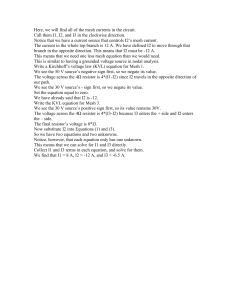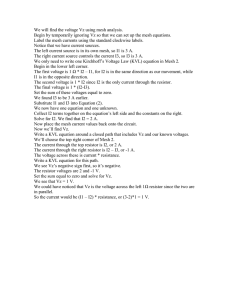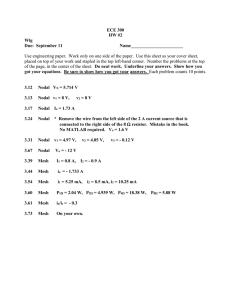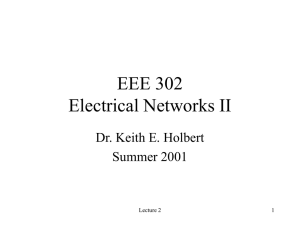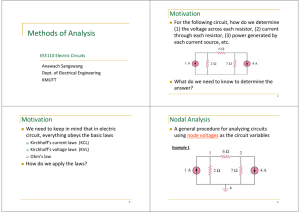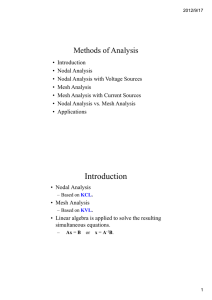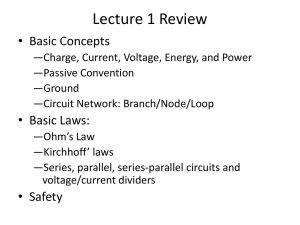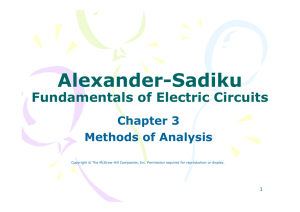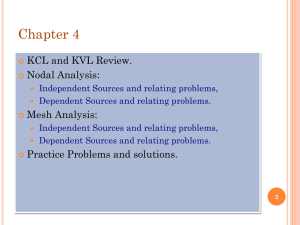ECE1311_3
advertisement
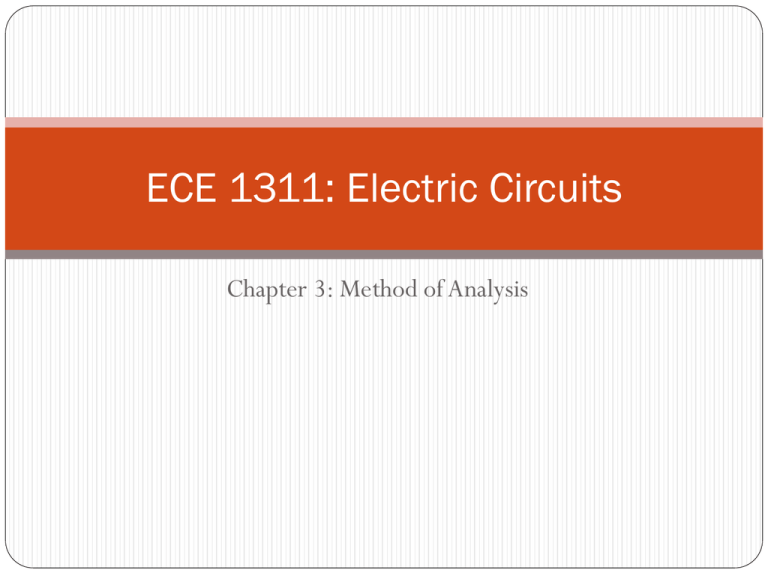
ECE 1311: Electric Circuits Chapter 3: Method of Analysis Analysis Method Overview Solving linear equations Nodal Analysis Supernodes (Nodal analysis with voltage supply) Mesh Analysis Supermeshes (Mesh analysis with current source) Recap What is vo in each case? What effect does the resistor has on the current flowing in the circuit? Recap What is io in each case? What effect does the resistor has on the voltage seen by the circuit? Networks terminology Planar circuit: a circuit that can be drawn on a plane with no crossing branches Node: point of two or more elements are joined Essential node: point of three or more elements are joined Branches: path that connects two nodes Loop: Path with last node same as starting node that does not cross itself Mesh: Loop that does not enclose any other loops Practice 3.1 Nodal Analysis: Introduction Another easier way to solve for currents and voltages easier, more methodical Based on KCL Usually use to solve for voltages All voltages have a common reference point Nodal Analysis: Review of steps Practice 3.2 Nodal Analysis: Use of laws All three laws applied KCL applied at each n-1 non-reference node Ohm’s law to express the branch current in terms of node voltages KVL when determining the voltage drop across the resistor Practice 3.3 Solve: answer v1= 4.8V, v2 = 2.4V, v3 = -2.4V Practice *Notice the dependent source Supernodes (1) A super-node is formed by enclosing a (dependent or independent) voltage source connected between two nonreference nodes and any elements connected in parallel with it. Note: We analyze a circuit with super-nodes using the same steps mentioned in the nodal analysis except that the supernodes are treated differently. Supernodes (2) Basic steps: 1.Take off all voltage sources in super- nodes and apply KCL to super-nodes. 2.Put voltage sources back to the nodes and apply KVL to relative loops. Practice 3.4 Practice 3.5 Practice 3.6 Practice 3.7 Mesh Analysis: Introduction Applies KVL to solve for currents Work with imaginary currents Only apply to planar circuit Mesh Analysis: Review of Steps Practice 3.8 Practice Supermesh (1) A super-mesh results when two meshes have a (dependent or independent) current source in common as shown in (a). We create a super-mesh by excluding the current source and any elements connected in series with it as shown in (b). Supermesh (2) The properties of a super-mesh: 1.The current source in the super-mesh is not completely ignored; it provides the constraint equation necessary to solve for the mesh currents. 2. A super-mesh has no current of its own. 3. A super-mesh requires the application of both KVL and KCL. Practice 3.9 On each resistor, Practice 3.10 Mesh analysis Practice 3.11 Mesh analysis Practice 3.12 Mesh analysis Nodal vs Mesh Analysis
